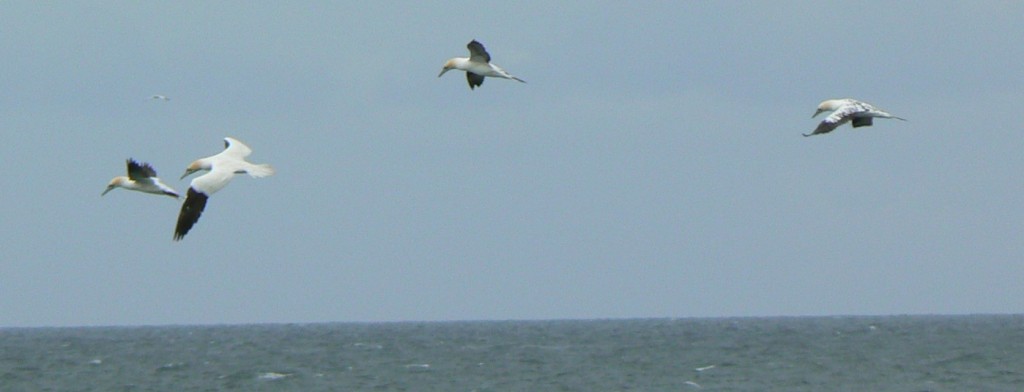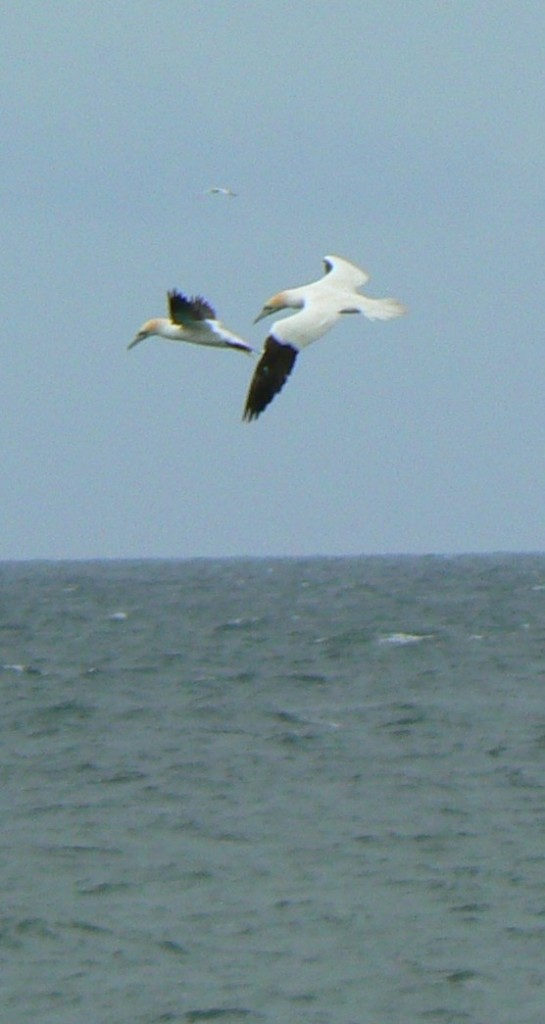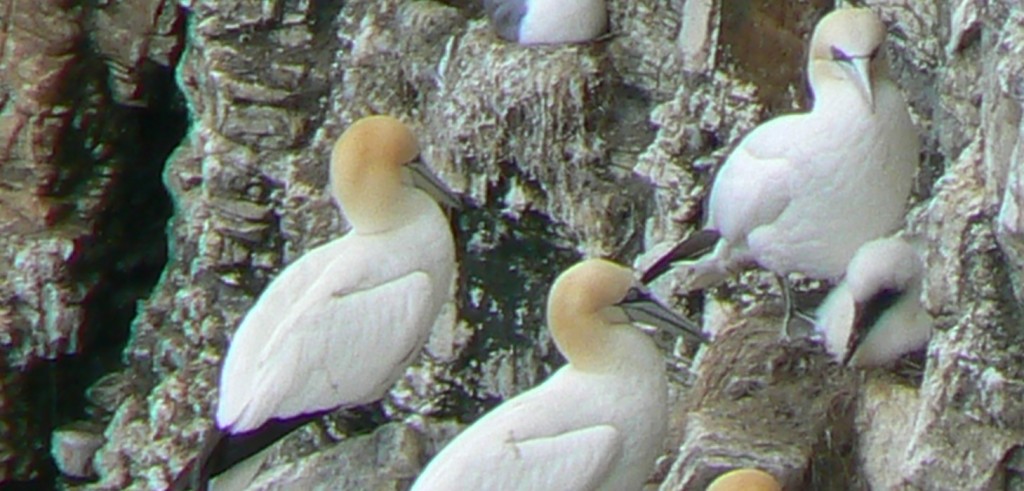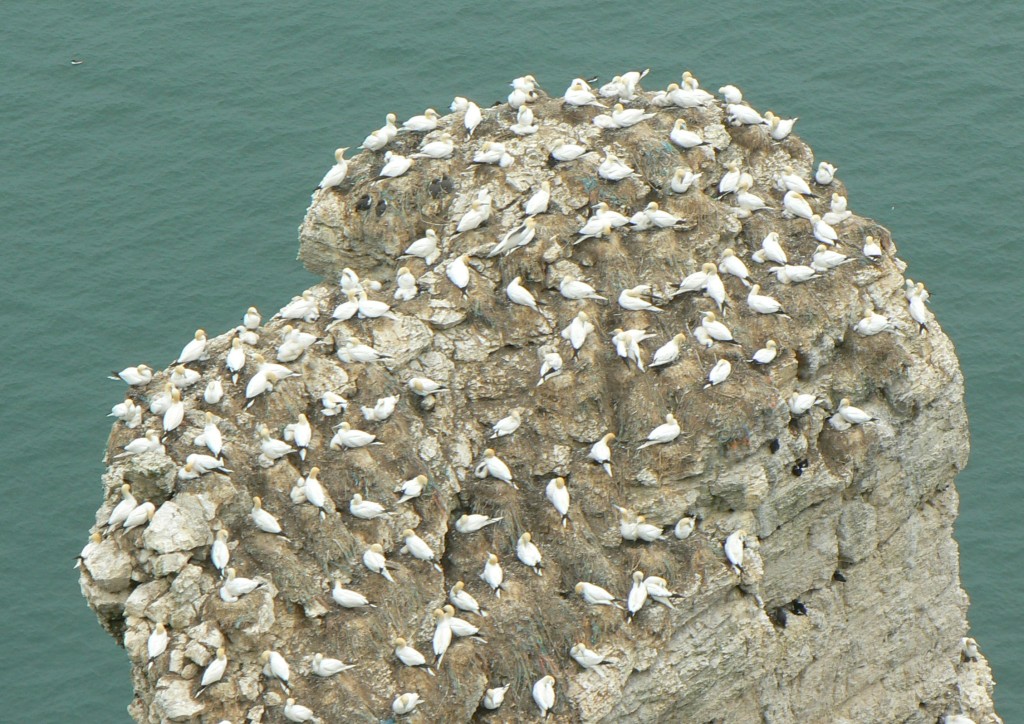
[230] Morus bassanus, Gannet
Introduction
Morus bassanus, the (Northern) Gannet, is a magnificent seabird. They feed by diving up to thirty metres below sea level.
Taxonomy
Kingdom – Animals
Phylum – Chordates
Class – Birds
Clade – Ardeae (Seabirds – excludes waterfowl)
Clade – Aequornithes (Most seabirds)
Order – Suliformes (Cormorants, Anhingas, Frigatebirds and Gannets)
Family – Sulidae (Gannets and Boobies)
Genus – Morus
Scientific Name – Morus bassanus
The Gannet was classed as Pelecanus bassanus by Linnaeus in 1758.
It became Sula bassanus in 1760 and then Morus bassanus in 1816
Name
Gannet, from Old English roots, means strong or masculine and is cognate with gander.
Morus comes from Ancient Greek moros meaning foolish, cognate with moron. Its relatives were named Boobies as they were so unused to men that they could be picked up and taken for food from their colonies. Bassanus comes from Bass Rock.
Use of the word gannet for a gluttonous eater dates from the early Twentieth Century.
Description
The three species of Gannet are sometimes considered as subspecies of a single species. They are so closely related to Boobies as to be considered sometimes to belong to the same genus Sula. [Sula comes via Scottish Gaelic from Old Norse meaning ‘cleft stick’ from the appearance of the black tipped crossed wings when held aloft.]
Unless you go to a breeding colony you will only see these birds flying in the distance. They fly effortlessly over the sea with long outstretched wings. Their pointed bill points forward and the bird appears to be all white except for the wingtips, which are black.



When they feed, they fold their wings back to make a torpedo shape with their long, pointed bills. They dive at speed from a height straight down to over ten metres depth and continue swimming deeper.
If you can get closer you can see that the head and neck are an attractive shade of pale golden colour.



Habitat and use
Gannets are true seabirds, spending their lives at sea. Their range covers the western, northern and eastern regions of the Atlantic from the Caribbean to the Mediterranean.
They only return to land to breed and they do so at a limited number of clifftop sites and islands round the coast. Bempton Cliffs in Yorkshire is the only site in England. There are others in Wales, Scotland, Ireland, and the island of Alderney (in the Channel Islands.) Outside the UK there are a few sites in northeast Europe, Iceland and around Newfoundland.
They nest in the sides of the cliffs and the pairs share brooding and feeding duties, greeting each other when they return.





Other species of Gannets and Boobies are geographically separate.
Other Notes
Apart from their breeding sites you can see Gannets at sea around the coast.

See also
See [149] Puffin for some more sea birds. If you actually venture out into the sea you will also see Shearwaters and Petrels from the family Procellariidae.
